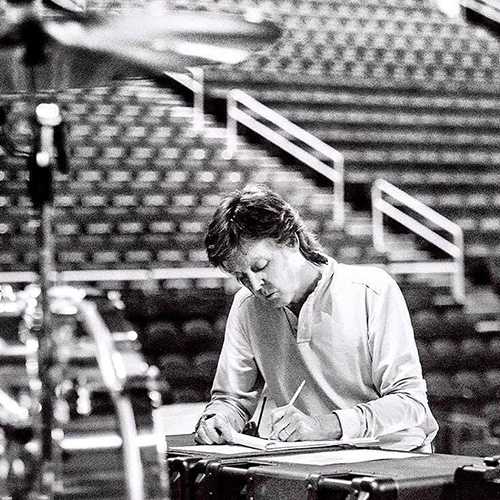Thursday, July 11, 1968
Recording "Revolution", recording and mixing "Ob-La-Di, Ob-La-Da"
For The Beatles
Last updated on October 21, 2024
Thursday, July 11, 1968
For The Beatles
Last updated on October 21, 2024
"The Beatles" (aka the White Album) sessions
May 30 - Oct 18, 1968 • Songs recorded during this session appear on The Beatles (Mono)
Recording studio: EMI Studios, Studio Three, Abbey Road
Session Jul 09, 1968 • Recording "Ob-La-Di, Ob-La-Da"
Session Jul 10, 1968 • Recording "Revolution"
Session Jul 11, 1968 • Recording "Revolution", recording and mixing "Ob-La-Di, Ob-La-Da"
Interview Jul 13, 1968 • The Beatles interview for New Musical Express (NME)
AlbumSome of the songs worked on during this session were first released on the "The Beatles (Mono)" LP
Work on “Revolution” began the previous day, and additional overdubs were added on this day to what would become the B-side of the upcoming Beatles single.
The first session of the day, running from 4pm to 7pm, was largely dedicated to overdubbing some additional electric guitar, played by John Lennon, and an electric piano, played by Nicky Hopkins, onto take 15.
Nicky Hopkins had previously collaborated with George Harrison, Paul McCartney, and Ringo Starr on June 25, during the recording of “Sour Milk Sea” for Apple artist Jackie Lomax, likely leading to his involvement in this Beatles session.
In the day’s second session, which ran from 7 am to 3:45 pm, The Beatles returned to “Ob-La-Di, Ob-La-Da.” The same saxophonists from the July 5 session added three saxophones to take 22. Additionally, Paul McCartney enhanced the track with some piano flourishes.
Subsequently, two tape reductions were made, labeled take 23 and take 24. On take 23, Paul McCartney double-tracked his bass line, playing an acoustic guitar.
And then I put the bass on after [sings bassline] and then double-tracked it with an acoustic guitar. That’s a cool idea, an octave up from the bass, playing exactly the same. And acoustic.
Paul McCartney – From Interview: Paul McCartney on His Life as a Bassist | | Reverb News – interview with Tony Bacon, 1994
Further work on “Revolution” ensued. A tape reduction was made, with take 15 evolving into take 16. Subsequently, Paul added his bass guitar part.
By the day’s end, two mono mixes of “Ob-La-Di, Ob-La-Da,” labelled as RM1 and RM2, were completed, and “Revolution” was approaching its final form. The Beatles continued working on these two tracks the next day.


Recording • SI onto take 15
Recording • SI onto take 22
Tape copying • Tape reduction take 15 into take 16
Recording • SI onto take 16
Tape copying • Tape reduction take 22 into take 23
Tape copying • Tape reduction take 22 into take 24
Recording • SI onto take 23
Mixing • Mono mixing - Remix 1 from take 23
Mixing • Mono mixing - Remix 2 from take 23
The Complete Beatles Recording Sessions • Mark Lewisohn
The definitive guide for every Beatles recording sessions from 1962 to 1970.
We owe a lot to Mark Lewisohn for the creation of those session pages, but you really have to buy this book to get all the details - the number of takes for each song, who contributed what, a description of the context and how each session went, various photographies... And an introductory interview with Paul McCartney!
The Beatles Recording Reference Manual: Volume 4: The Beatles through Yellow Submarine (1968 - early 1969)
The fourth book of this critically acclaimed series, "The Beatles Recording Reference Manual: Volume 4: The Beatles through Yellow Submarine (1968 - early 1969)" captures The Beatles as they take the lessons of Sgt. Pepper forward with an ambitious double-album that is equally innovative and progressive. From the first take to the final remix, discover the making of the greatest recordings of all time. Through extensive, fully-documented research, these books fill an important gap left by all other Beatles books published to date and provide a unique view into the recordings of the world's most successful pop music act.
If we modestly consider the Paul McCartney Project to be the premier online resource for all things Paul McCartney, it is undeniable that The Beatles Bible stands as the definitive online site dedicated to the Beatles. While there is some overlap in content between the two sites, they differ significantly in their approach.

Notice any inaccuracies on this page? Have additional insights or ideas for new content? Or just want to share your thoughts? We value your feedback! Please use the form below to get in touch with us.